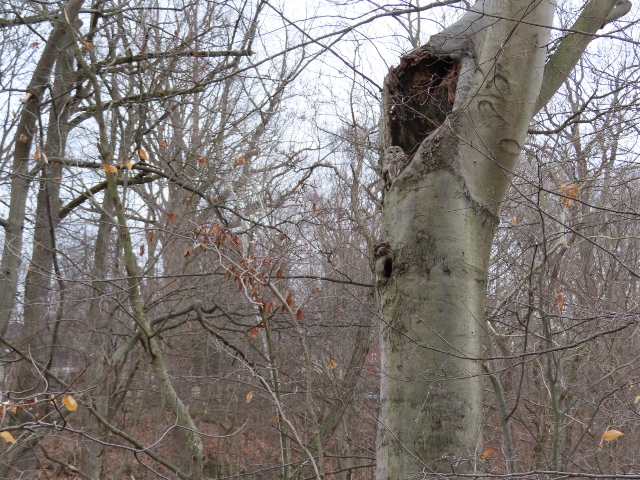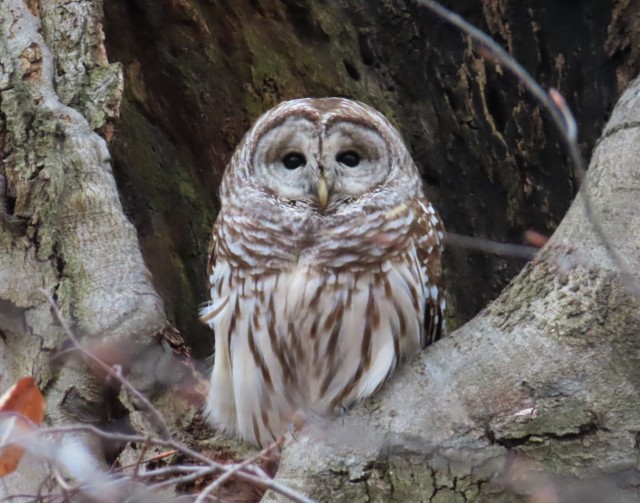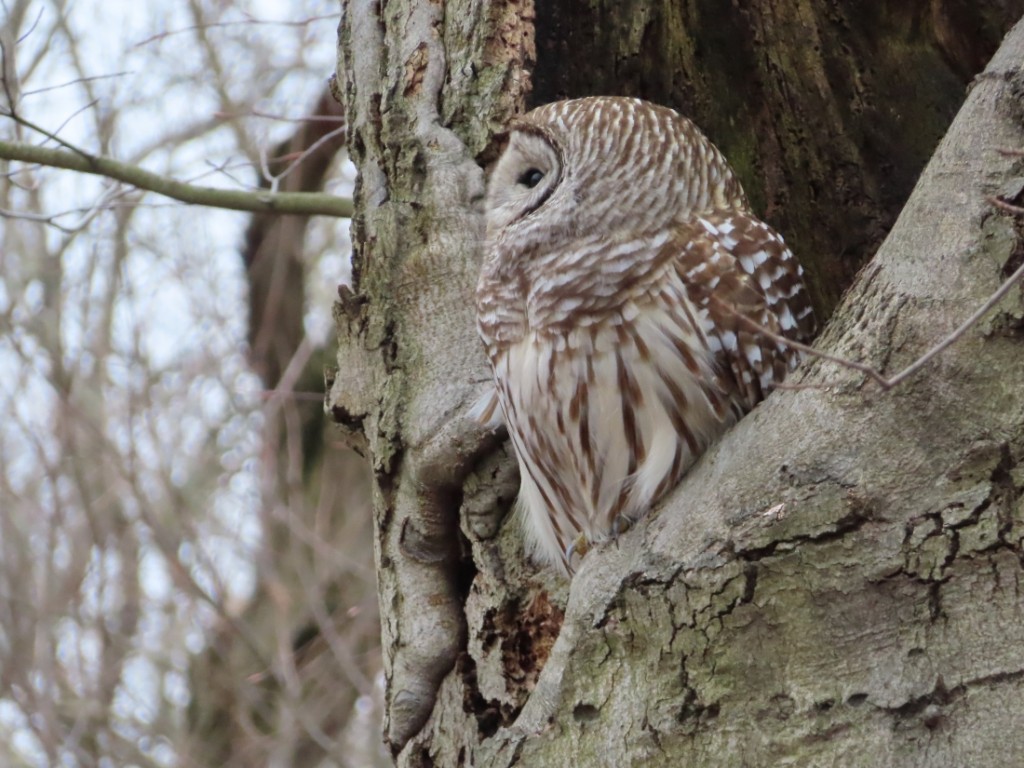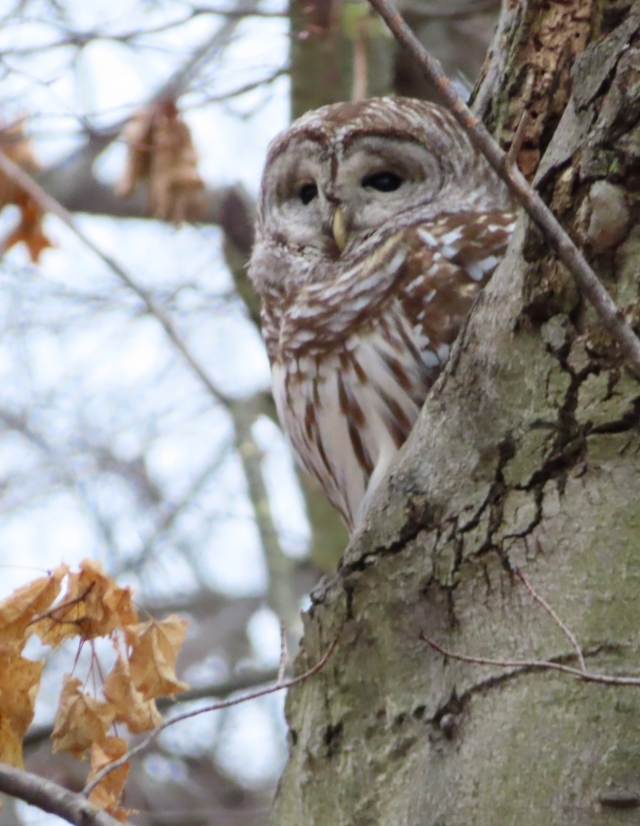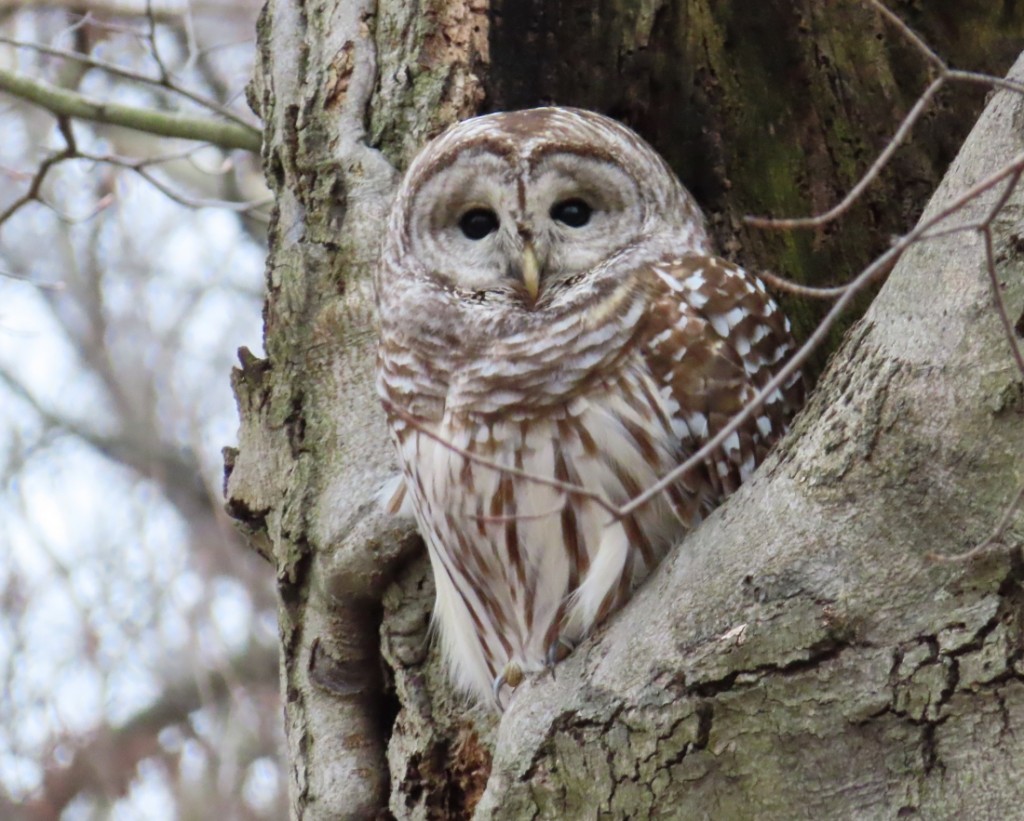This fine bird has been hanging out on the same tree for the past few Winters at Big Creek Reservation in northeast Ohio. Its call, “Who cooks for you? Who cooks for you-all?” is a classic sound of old forests and swamps. But it can also pass by completely unnoticed as it flies noiselessly through dense canopies or snoozes on tree limbs. Originally a bird of the east, it has spread through the Pacific Northwest and southward into California.
Barred Owls are brown to gray overall, with dark striping on the underside. Their eyes are a dark brown color and may appear intensely black in the field and, although large, they are fairly closely set. This is one of the larger species of owls. Adults measure anywhere from 16 to 25 inches in length, with a wingspan ranging from 38 to 49 inches. Barred Owls don’t migrate, and they don’t even move around very much. In one study of 158 birds that were banded and then found later, none had moved farther than 6 miles away.
Their diet consists mainly of small mammals, but this species is an opportunistic predator and is known to prey upon other small vertebrates such as birds, reptiles, and amphibians, as well as a variety of invertebrates. On the flip side, the Great Horned Owl is the most serious predatory threat to the Barred Owl. Although the two species often live in the same areas, a Barred Owl will move to another part of its territory when a Great Horned Owl is nearby.
This bird tends to raise a relatively small brood often in a tree hollow or snag. Egg laying typically begins in March and runs throughout April. The female alone incubates the eggs, doing so for about 28 days, while the male gathers food for her. Fledging occurs at about 36–39 days. Young Barred Owls can climb trees by grasping the bark with their bill and talons, flapping their wings, and walking their way up the trunk.
In always enjoy hearing this bird’s call. It is adaptable and can sometimes be heard in suburban neighborhoods. The oldest recorded Barred Owl was at least 26-1/2 years old. It was banded in North Carolina in 1993, and caught due to an injury in 2019.

